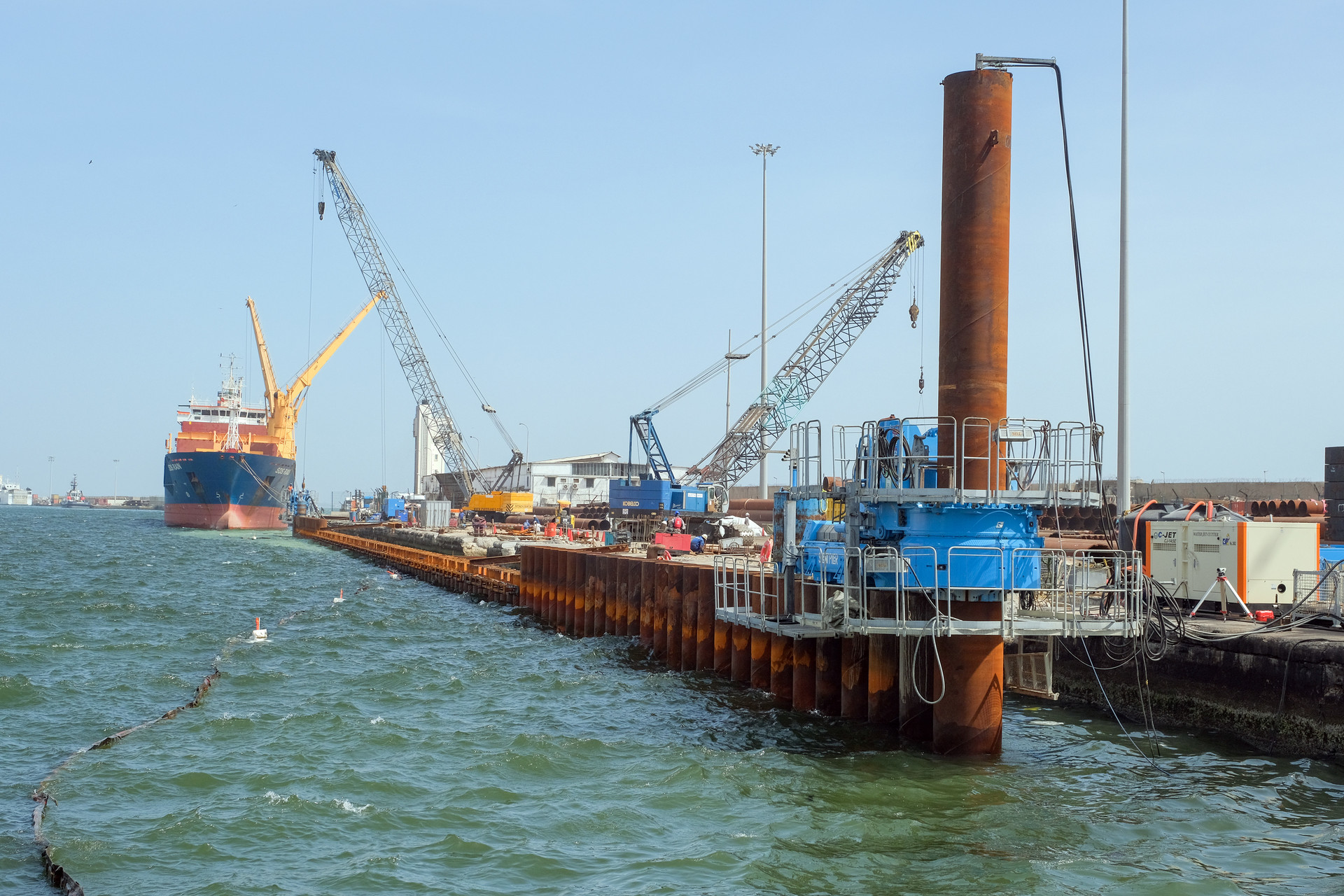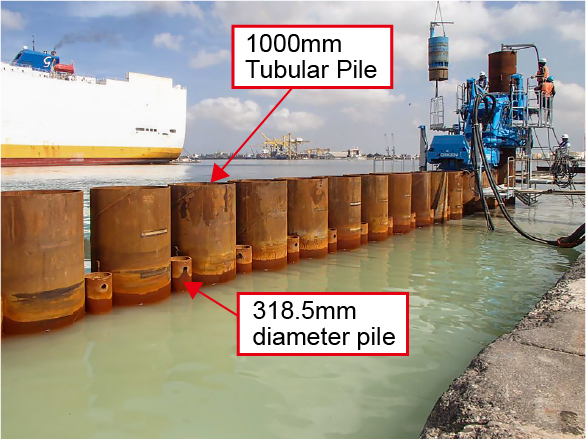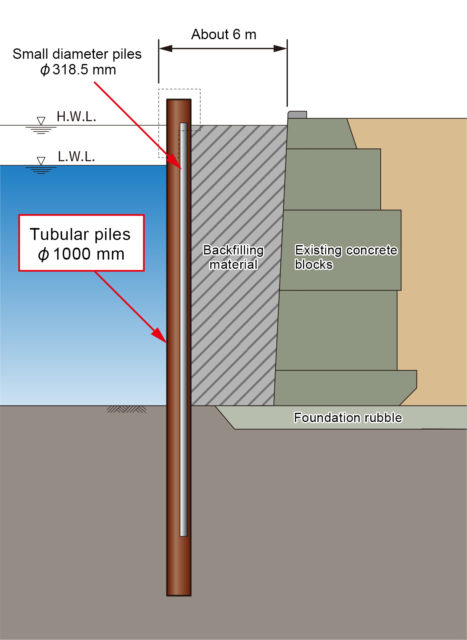Gyropress Method™ Adopted for Harbour Wall Rehabilitation (ODA Project) in Dakar Port, Senegal

Group company GIKEN SEKO has completed the press-in construction portion of a project to rehabilitate harbour walls in Senegal.
The Group’s superior Gyropress Method™ press-in technology was adopted for the project because it does not interfere with cargo handling and ship berthing operations during construction. It drew the attention of ODA related-parties as an excellent example of how this one-of-a-kind Japanese technology can help to address construction issues in developing countries. It has also been widely publicised in the media and at various seminars, including the Public Procurement Symposium sponsored by the Japan Society of Civil Engineers in November 2020. In March 2021, GIKEN was invited to present to construction consultants, general contractors, trading companies, NGOs, local governments and other ODA-related parties at the JICA Issue Dissemination Seminar sponsored by the Japan International Cooperation Agency (JICA).
Known as one of the most polluted canals in the United States, the Gowanus Canal walls were aging badly. With many construction consultants surveying the soil, water quality, and health of the canal walls locally as part of a major river restoration project, the concerns of local construction companies and residents led to this project being launched.
Selection Basis
The initial plan was to build up the wall by stacking concrete blocks in the water. However, this plan required relocating the pier 20 meters toward the sea, with concerns raised that it would narrow the distance to the opposite pier and inconvenience ship operations.
In addition, construction required use of a large working platform on a barge, which would have created an issue of safety for ship berthing and cargo handling operations during construction.
On the other hand, by using tubular piles, the wall only needed to be relocated 6 meters forward. Using the Gyropress Method, which is one method for constructing tubular pile walls, the self-moving press-in machine moves across already driven piles. This enables construction without the need for a working platform on a barge, so there is no interference with ship berthing and cargo handling operations. In addition, the rotary cutting press-in method uses cutting ring bits attached to the tubular pile toes to enable installation directly into rock without prior excavation. As a fast construction method that does not require temporary works, the Gyropress Method also reduces time for construction compared to using concrete blocks or any other construction method.
These unique advantages, of a high-quality Japanese infrastructure technology, led to its adoption for this project.
Project Overview





